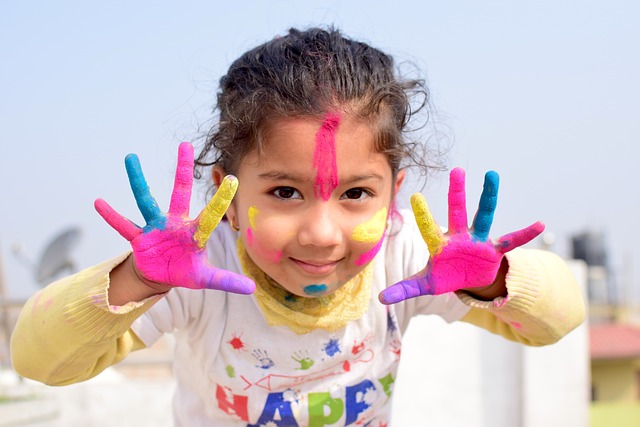Art and music play an integral role in the development of children, contributing to their cognitive, emotional, social, and physical growth. These creative forms of expression offer children unique opportunities to explore their imaginations, express themselves, and understand the world around them. This article delves into the profound impact of art and music on child development, highlighting the numerous ways in which these activities nurture young minds and bodies.
Cognitive Development
Art and music are powerful tools for enhancing cognitive development in children. Engaging in artistic activities such as drawing, painting, and sculpting helps children develop critical thinking and problem-solving skills. For instance, when children mix colors to create new shades or experiment with different shapes, they are learning about cause and effect, spatial relationships, and the principles of design. These experiences encourage them to think creatively and develop their ability to reason and analyze.
Music, on the other hand, has been shown to have a direct impact on brain development, particularly in areas related to language and math. Studies have found that children who receive music instruction often perform better in math and reading. This is because music helps children recognize patterns, rhythms, and sequences, which are fundamental to mathematical thinking. Additionally, learning to play an instrument requires concentration, memory, and coordination, all of which contribute to cognitive growth.

Emotional Development
Art and music provide children with valuable outlets for emotional expression and exploration. Through creating art, children can convey feelings and thoughts that they may not yet have the verbal skills to express. For example, a child might use bright colors to depict happiness or dark colors to represent sadness. This process of externalizing emotions through art can be therapeutic, helping children understand and manage their feelings.
Music also plays a significant role in emotional development. Listening to and playing music can evoke a wide range of emotions, from joy and excitement to calmness and reflection. For children, music can be a way to process and express complex emotions. Singing, dancing, or playing an instrument can also provide a sense of accomplishment and boost self-esteem, particularly when children are praised for their efforts.
Moreover, music can serve as a comforting presence, helping children navigate challenging situations. Lullabies, for instance, have long been used to soothe infants and young children, creating a sense of security and peace.
Social Development
Art and music also foster social development by encouraging collaboration, communication, and cultural awareness. Group art projects, such as murals or collaborative sculptures, teach children the value of teamwork and cooperation. As they work together to create something meaningful, they learn to share ideas, negotiate, and respect the contributions of others.
In the realm of music, participating in a choir, band, or orchestra teaches children how to work harmoniously with others. They must listen to their peers, follow a conductor, and blend their sounds to create a unified performance. These experiences help children develop important social skills such as empathy, cooperation, and active listening.
Furthermore, exposure to diverse forms of art and music from different cultures broadens children’s understanding of the world. It fosters an appreciation for diversity and helps them recognize the beauty and value of different traditions and perspectives. This cultural awareness is an essential component of social development, as it prepares children to navigate a globalized world with openness and respect.

Physical Development
Engaging in art and music activities also contributes to physical development, particularly in the areas of fine motor skills and coordination. Art projects that involve cutting, gluing, drawing, or painting require precise hand movements, which help strengthen the small muscles in children’s hands and fingers. These fine motor skills are crucial for tasks such as writing, buttoning clothes, and tying shoelaces.
Similarly, playing a musical instrument, whether it’s plucking the strings of a guitar, pressing the keys of a piano, or striking a drum, enhances hand-eye coordination and dexterity. For younger children, even simple activities like clapping along to a rhythm or dancing to music can improve gross motor skills, balance, and coordination.
Additionally, music and movement activities can promote physical fitness. Dancing, in particular, is an excellent way for children to stay active while having fun. It encourages them to use their bodies in creative ways, developing strength, flexibility, and endurance.
Creativity and Imagination
Perhaps one of the most profound impacts of art and music on child development is the nurturing of creativity and imagination. In a world increasingly driven by technology and structured learning, art and music offer children the freedom to explore their ideas without limitations. Whether they are painting a fantastical landscape or composing a simple melody, children are exercising their imaginations and developing their creative thinking abilities.
This creativity is not only important for artistic pursuits but is also a valuable skill in other areas of life. Creative thinkers are better equipped to solve problems, adapt to new situations, and generate innovative ideas. By encouraging children to engage in art and music, we are helping them develop the creative potential that will serve them well throughout their lives.

Conclusion
Art and music are essential components of a well-rounded education, offering children a myriad of benefits that extend far beyond the classroom. From cognitive and emotional growth to social and physical development, the impact of these creative activities on child development is profound and far-reaching. By fostering creativity, expression, and cultural awareness, art and music help shape well-rounded individuals who are capable of thinking critically, expressing themselves, and contributing meaningfully to society. As we continue to recognize the importance of these disciplines, it is crucial that we provide children with ample opportunities to engage with art and music, ensuring their holistic development and nurturing their potential for the future.


